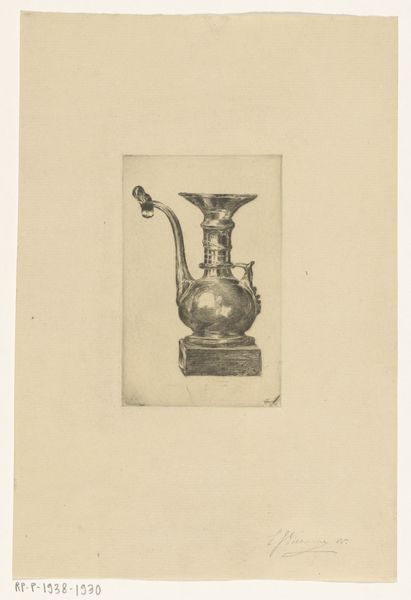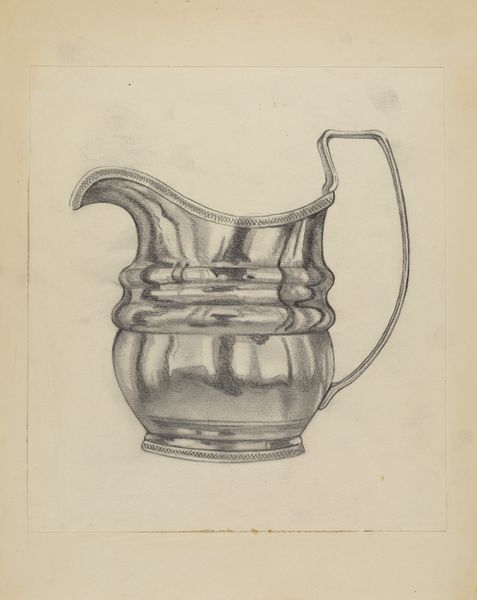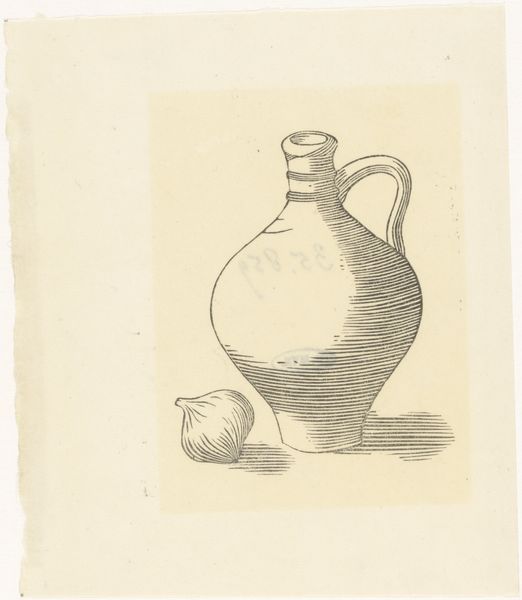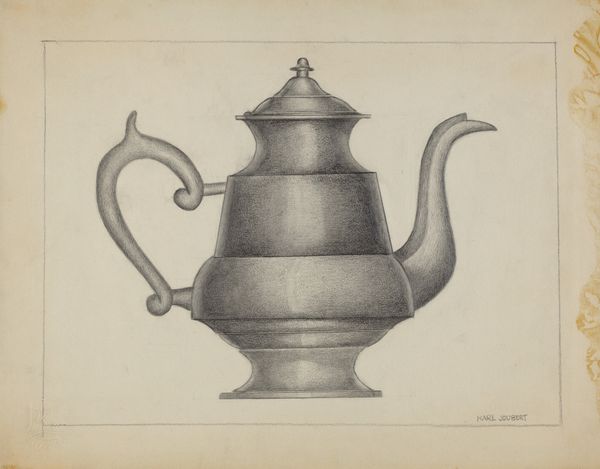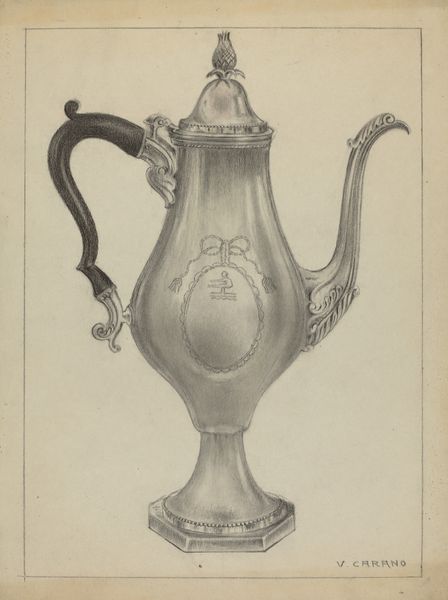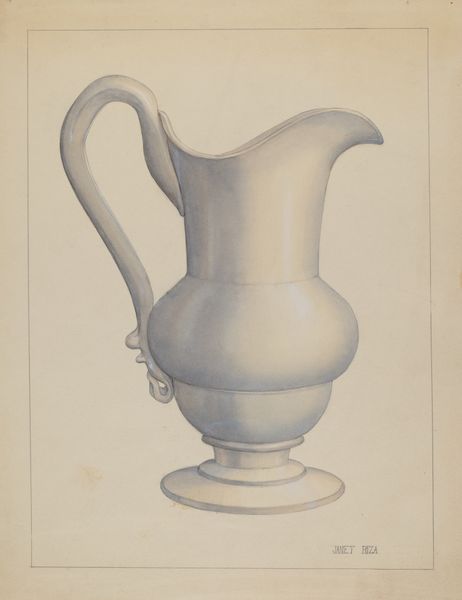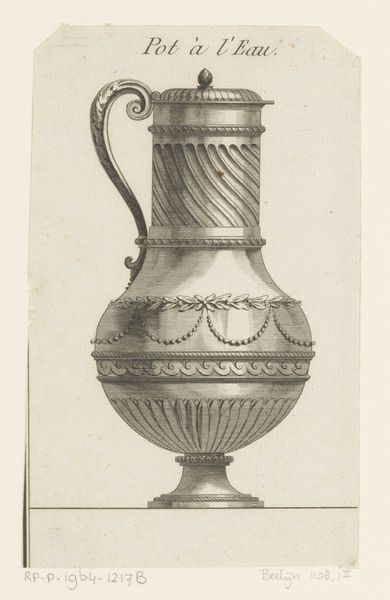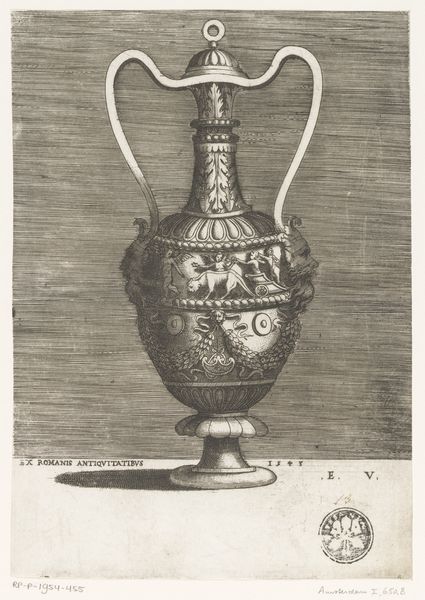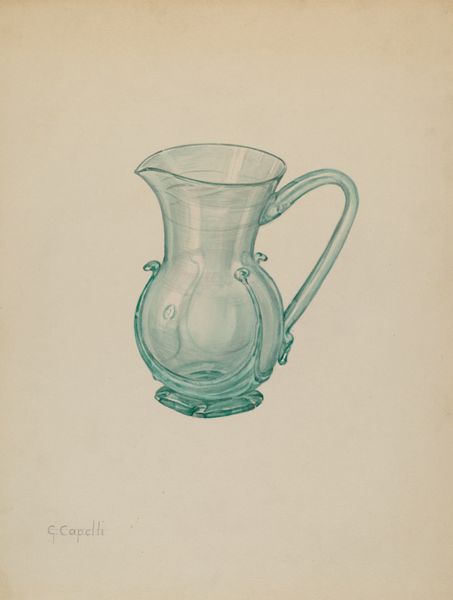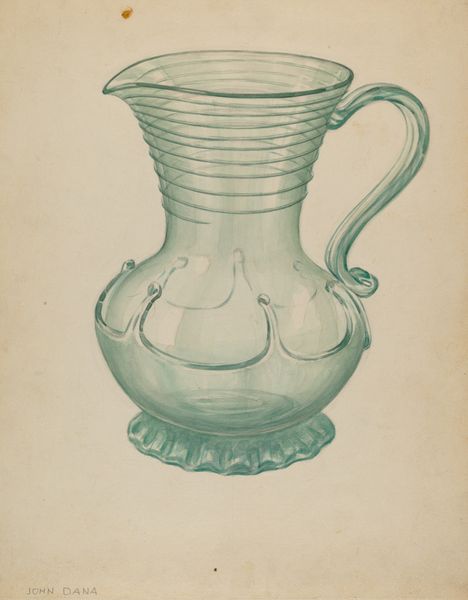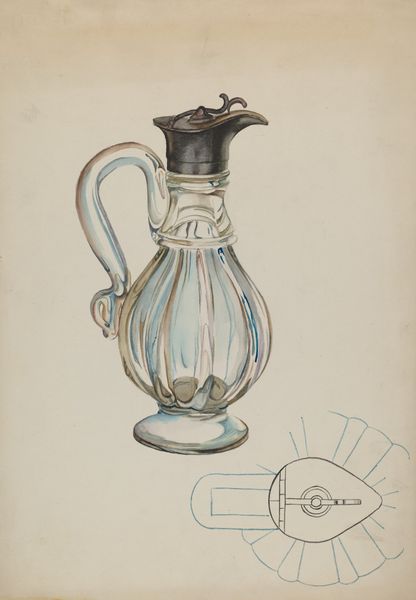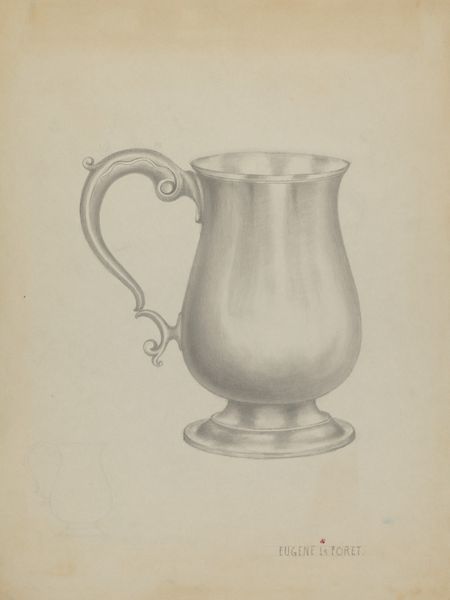
print, etching
# print
#
etching
#
old engraving style
#
realism
Dimensions: height 118 mm, width 75 mm
Copyright: Rijks Museum: Open Domain
Here is the audio guide script: Eduard Niermans etched this image of a Schenkkan, a traditional pouring vessel, sometime around 1890. The object sits upon a plinth, reminiscent of ancient Greek amphorae, containers that carried wine, oil, and other life essentials, and which were often adorned with scenes of myths and daily life. The Schenkkan itself, with its bulbous body and elegant spout, echoes forms found in both ritualistic and domestic contexts across cultures. Consider the ancient Roman wine jugs, or even the elaborate ewers depicted in Renaissance paintings. These vessels transcend mere functionality; they become symbols of hospitality, abundance, and even transformation. Water, wine, oil, and other precious liquids represent the lifeblood of civilization. Throughout history, the vessel appears as a metaphor for the body, a container of vital essence, the soul. The act of pouring carries its own symbolic weight, suggesting generosity, sharing, and communion. Notice how Niermans' etching captures the reflective quality of the metal, giving it a sense of weight and presence, like a silent guardian of ancient traditions. The image reminds us of the cyclical nature of symbols, forever resurfacing, transformed yet familiar, in the vast theater of human culture.
Comments
No comments
Be the first to comment and join the conversation on the ultimate creative platform.
